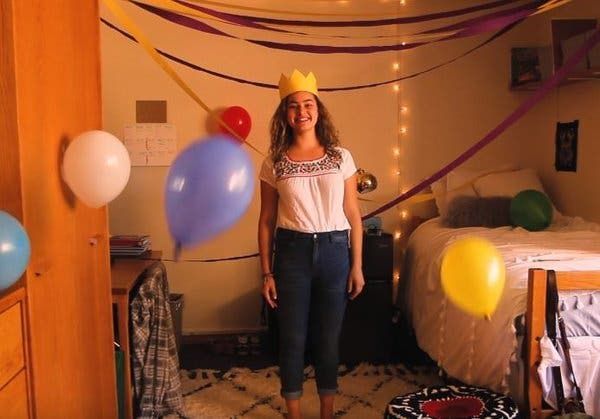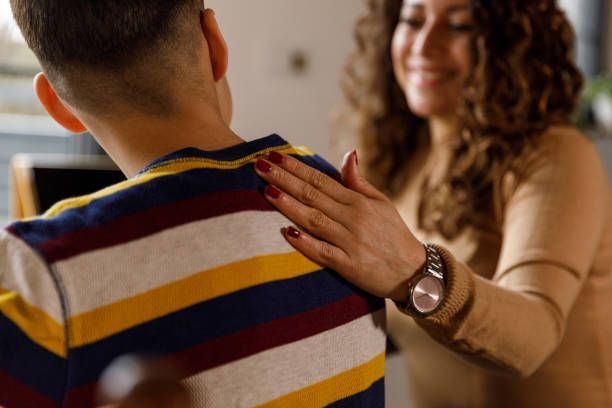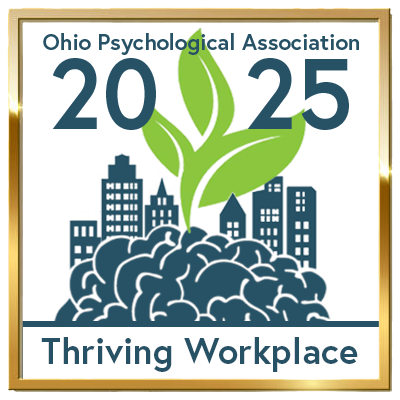
For many students attending college during 2020 and 2021, the college experience hasn’t been at all what they were expecting. Many colleges and universities shut down in the spring of 2020 as a response to the onset of the COVID-19 pandemic. Although most have since re-opened with heavy reliance on online learning and social distancing, everyone would agree that attending college is not the same as it was in past years.
A DIFFERENT EDUCATIONAL EXPEREIENCE
Online learning is very different from attending class in person. Many college students find themselves disappointed with the quality of the academic instruction they receive via online lectures. Some students report that they have very little direct instruction from professors, relying instead on reading material, pre-recorded lectures and written assignments. While this may work for some learners, others find it much harder to understand and retain the information. One college student commented, “I’m not learning nearly as much as I would have if classes were held in person.” Common complaints include that the only way to ask a question is to email a professor and hope to receive a response, that recorded lectures and printed texts pale in comparison to the rich communication that comes from live face-to-face interaction, and that online content, often prepared by professors who were never trained to work in this format, is boring. So called “Zoom Fatigue” is a real problem. It can be mentally draining to be focused on computer screens for extended periods of time. A college student who was interviewed for this article stated, “There’s a reason I didn’t apply to an online university. I wanted to take classes on campus.”
Some subjects just don’t translate easily into online experiences. Labs and other performance-based courses require a more hands-on, in person format. As a compromise, some colleges and universities have offered in-person classes with limited class size, schedules that are a hybrid of in-person and online instruction or courses that have been condensed to run for fewer weeks. Again, these formats may work for some students, but many others struggle with them.
THE RESOURCE GAP
COVID-19 has highlighted inequity in access to the types of resources that make a huge difference in a student’s ability to successfully engage in remote learning. Do you have access to a reliable, high-speed internet connection? Do you have the software to run the programs you need? Do you have a quiet space to be able to attend online classes or focus on online assignments without interruptions? Whether you have access to a high-end computer, or a more basic model can make a big difference in the quality of your academic experience.

LIVING ARRANGEMENTS
When universities shut down, many students who were living in on-campus housing lost their place to stay with short notice to make other arrangements. Some were able to move back home with family. Others did not have a safe or supportive home to move back to. Those who moved back home may have found themselves facing increased responsibility to care for siblings or sick relatives. Many had to take on more responsibility for contributing financially to the household, especially if parents or other family members lost employment, had their hours cut or were unable to work due to illness or a physical condition. One student who chose to stay in her dorm reported that so many others left or never moved in, that she found herself living in an eerily empty building which served as a constant reminder of how alone she was. That leads us to the next topic . . .

SOCIAL ISOLATION
One of the most common concerns among college students, and many other groups throughout the country, is the sense of disconnection from others. For many students, college is a time to meet new people from a variety of backgrounds and to make connections that could help them move on to the next phase of their life. Even the brief interactions that occur as students find their seats in lecture halls or pass each other on campus can be the start of life-long friendships.
Those types of interactions don’t happen as easily in virtual classrooms or when wearing masks and maintaining safe social distances.
In addition to isolation from peers and social acquaintances, the pandemic has also resulted in a reduction of interactions that foster professional development. There have been less chances to get involved with mentors and with the types of role models who can provide academic and professional support. Internship and summer job opportunities are not as readily available as they have been in the past and the quality of those experiences is not what it used to be.
Many people struggle with mental health problems during their college years. Trying to juggle school, work, extracurricular activities, friends and family while also trying to figure out the direction of the rest of your life is an enormous challenge – and it has gotten worse over the past year .A 2018-2019 survey of college students found that approximately 18.4% reported experiencing depression and 23.6% reported experiencing anxiety.

Over the past year, the National Institute of Health Statistics (NIHS) partnered with the Census Bureau to conduct Household Pulse Surveys to capture an impression of the impact of COVID-19 in the US. According to their results, rates of depression have risen to more than 43% and anxiety to more than 51% of persons ages 18-29 years old.

WHAT CAN YOU DO?
Give yourself credit for what you are doing. This is not a normal year. If you are feeling unsettled, stressed and overwhelmed, it isn’t just you. Things really are harder this year. Take a moment to list and recognize all that you actually do in a typical day. Give yourself credit for doing as well as you are under difficult circumstances.
Set realistic expectations. Perfection is not a realistic goal. Mistakes will happen. Look at mistakes as opportunities to learn, rather than as evidence that you are a failure. Keep in mind that taking on too much at once just means that you’re doing more things less well.
Communicate. Whether it seems like it or not, professors want students to succeed. If you are struggling with your academic work or something is getting in the way of your ability to meet deadlines, communicate with your professors about it. Let them know what’s going on. Ask for an extension. Ask for the resources you need. Talk with your friends and family. Let them know how much they matter to you, even if you aren’t as available as you have been in the past. Let them know what you need from them. People often do want to help. They may not know that you need help, and they may not know the best way to help, so you must guide them. If you’re worried about being a burden, think about how willing you would be to help if it was one of your friends reaching out to you.
Don’t be ashamed to reach out for professional help. If you are struggling, know that you don’t have to go through it alone. Help is available. There is no shame in seeking professional help. It doesn’t mean you’ve failed. It doesn’t mean you’re broken. It means you’re human and you’re going through a lot. Help is available. Most colleges and universities have on campus counseling services for students who need them. Both college- and community-based services are available in person or through telehealth. If you or someone you know is in distress, you can call the National Suicide Lifeline at 1-800-273-8255, or text “HELP” to 741-741.
Child and Adolescent Behavioral Health's
Trauma Program Manager
Mary Kreitz, LPC, CDCA, is the author of this blog post. Mary is an expert in her field with 18 years of experience. If your child is struggling because of receiving microaggressions, please contact
C&A at 330-433-6075.
RECENT POSTS












